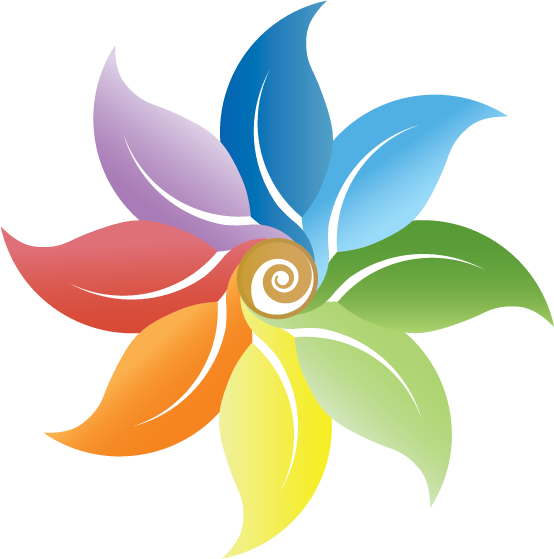Free Mini Nature Journal
06/30/2024
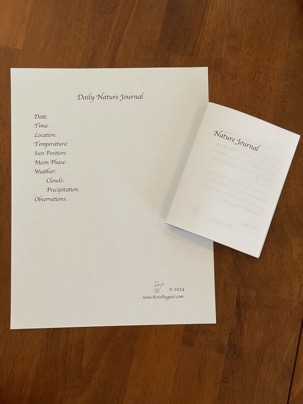
Days 1-10 of the Mini Nature Journaling class are now available!
Starting on Summer Solstice, June 20, I have been uploading one journal prompt daily. There is a PDF sample journal for taking notes, and you can even create a mini journal if you are feeling crafty!
This has been a fun project for me. I am excited to share it and to spread some mindful connection to nature. Over 10 days we explore a variety of aspects of nature, each one opening up avenues for deeper dives into learning and appreciating the wonders of the outside world.
I happened to be visiting my 86-yr-old mother in Arizona during this time. She was an attentive student, sharing her observations every day, writing in her journal, and teaching me lessons she learned from her tracker father.
I see this project as something that can be shared with children or elders, family, and friends, to encourage people to get outdoors and experience our interconnections with nature.
This free class is available year-round.
Sign up any time!
Nature Connection for Therapy and Wellness
05/28/2024
Recently I had a veterinary appointment with a long-time client who was diagnosed with Alzheimer’s disease a few years ago. She is still able to live at home with her partner and cat. She recognized us and understood why we were there in this familiar veterinary home visit that we have repeated for many years. She has difficulty finding words now, and conversation is limited, but our long-time connection helped her to be at ease.
We had a lovely conversation about the birds at her feeder. As she was telling me about a bird she had seen, she pointed and said, “That one but more red.” I supplied the words – cardinal, red male – and she said “YES!” with a big smile as the words and thoughts returned for a bit. She told me how much she loves birds and horses, which we have always talked about on our visits. And she mimed and pointed to her favorite things in her garden. She has a lifetime of nature connection that she is pulling from, and it continues to bring her joy. The way her partner intentionally provides these opportunities for interaction with the world around her and stimulation for conversation is beautiful.
My father had Alzheimer’s and Lewy body dementia and was in memory care for the last part of his life. He was also a nature lover and the facility provided visiting goats and horses along with a raised herb garden perfect for wheelchair access. He enjoyed exploring the plants and interacting with the animals, even when human interactions became more challenging.
Nature connection, for many of us, is a balm, a salve for our wounds inside and out. I find that intentionally developing a deeper connection to nature and an understanding of the interrelationships we have with all living things feeds my soul. In times of difficulty, the comfort of that larger world is there to reassure that nature is tenacious, life returns, possibly in a different form, and it is worth protecting, nurturing, and connecting with. Creating natural areas for elders and children, in workplaces and homes, and preserving wild areas for our fellow beings is a satisfying way to care for ourselves and others.
What Nature do you Nurture?
We had a lovely conversation about the birds at her feeder. As she was telling me about a bird she had seen, she pointed and said, “That one but more red.” I supplied the words – cardinal, red male – and she said “YES!” with a big smile as the words and thoughts returned for a bit. She told me how much she loves birds and horses, which we have always talked about on our visits. And she mimed and pointed to her favorite things in her garden. She has a lifetime of nature connection that she is pulling from, and it continues to bring her joy. The way her partner intentionally provides these opportunities for interaction with the world around her and stimulation for conversation is beautiful.
My father had Alzheimer’s and Lewy body dementia and was in memory care for the last part of his life. He was also a nature lover and the facility provided visiting goats and horses along with a raised herb garden perfect for wheelchair access. He enjoyed exploring the plants and interacting with the animals, even when human interactions became more challenging.
Nature connection, for many of us, is a balm, a salve for our wounds inside and out. I find that intentionally developing a deeper connection to nature and an understanding of the interrelationships we have with all living things feeds my soul. In times of difficulty, the comfort of that larger world is there to reassure that nature is tenacious, life returns, possibly in a different form, and it is worth protecting, nurturing, and connecting with. Creating natural areas for elders and children, in workplaces and homes, and preserving wild areas for our fellow beings is a satisfying way to care for ourselves and others.
What Nature do you Nurture?
Spring Awakening!
03/25/2024
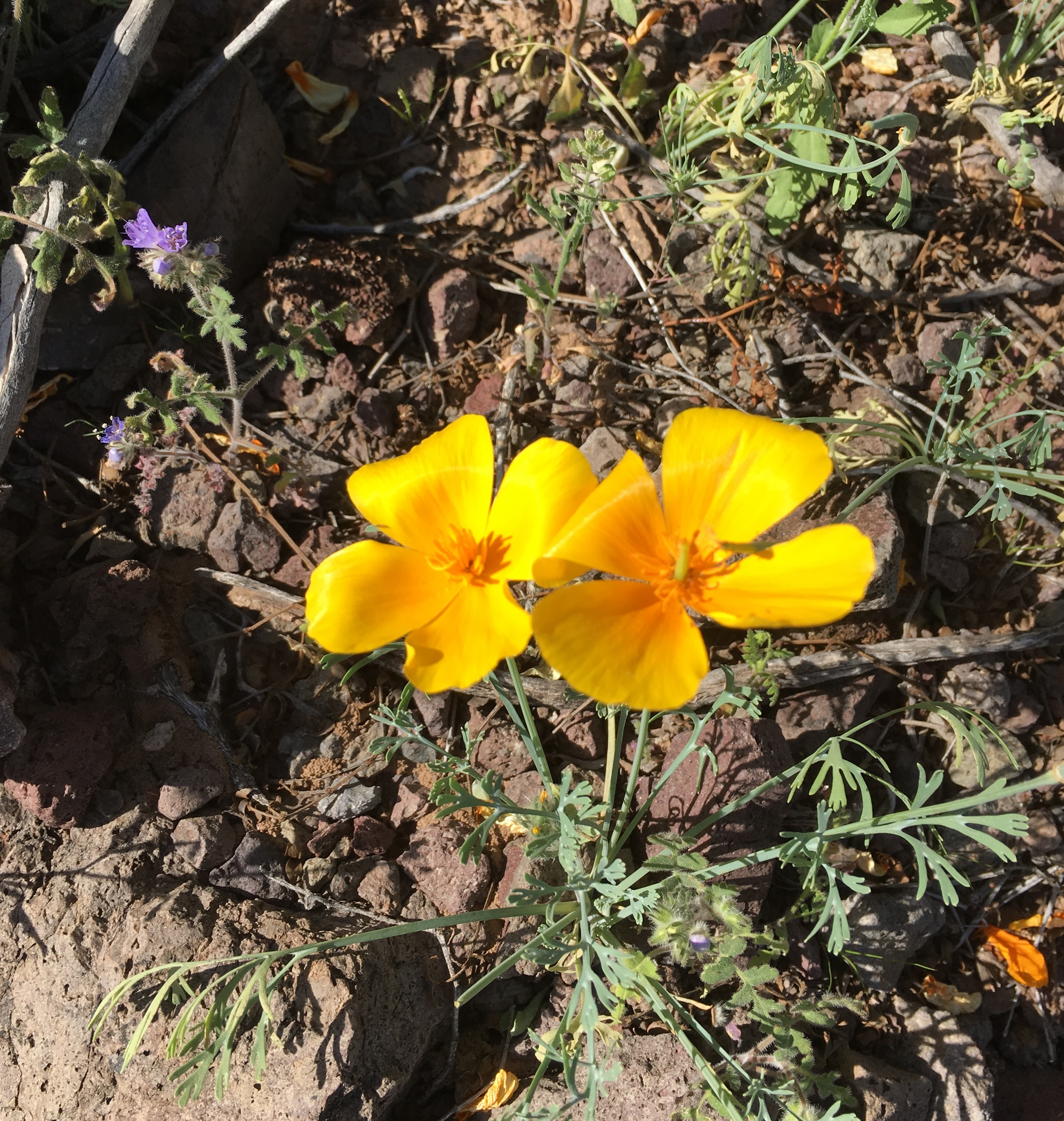
Living in a place where the winters are well-defined, dormant, cold, and requiring a completely different wardrobe to go outside, the coming of Spring is a magical time. Since moving to Iowa from Arizona 26 years ago, Springtime has brought a feeling of rebirth after the previously unimaginable cold of winter.
My childhood winters meant maybe putting on a jacket and wearing pants. Fifty degrees Fahrenheit was chilly, and we Desert Rats complained. Snow was a twice-in-a-lifetime fairy-like experience that was gone within a few hours.
Returning to Arizona, I have an enhanced appreciation for the spring wildflowers, including the California poppies that appear in special places, some years en mass. The Palo Verde trees that cover the landscape in splotches of tiny yellow flowers and the many cacti in bloom were always pretty, but now they hold a unique place in my childhood memories. I didn’t realize how unusual Saguaro cacti were and how grand their blooms and fruits were until moving away. Like the cornfields in Iowa, Saguaro were the sign that we were almost home at the end of a road trip.
Springtime can be subtle in places where the temperatures stay mostly above freezing. There are still spring flowers, baby animals, and migrating birds. The signs of Spring are there if you look for them!
What is sprouting where you live?
Welcome New Year!
01/10/2024

It is exciting to move into a new year that is fresh and clean and full of possibilities. What tracks do you want to make in the sand in the coming year?
I like to approach the New Year with gentle positive intentions rather than rigid or restrictive Resolutions that are hard to keep. It feels more supportive and stays with me longer to have a positive focus or a single word that inspires me.
The word Curiosity has been with me for the last few years as I learn to navigate a new phase in life. It has helped me to stay open to possibilities and to find ways to thrive in my own way.
Self-improvement is a lifelong project that requires kindness and compassion at least as much as commitment.
What lessons did you learn in 2023? What would you like to see in your future? What are you curious about?
Check out my new course for reflection, review, and renewal - Planning with the Seasons
Happy Winter Holidays!
12/20/2023
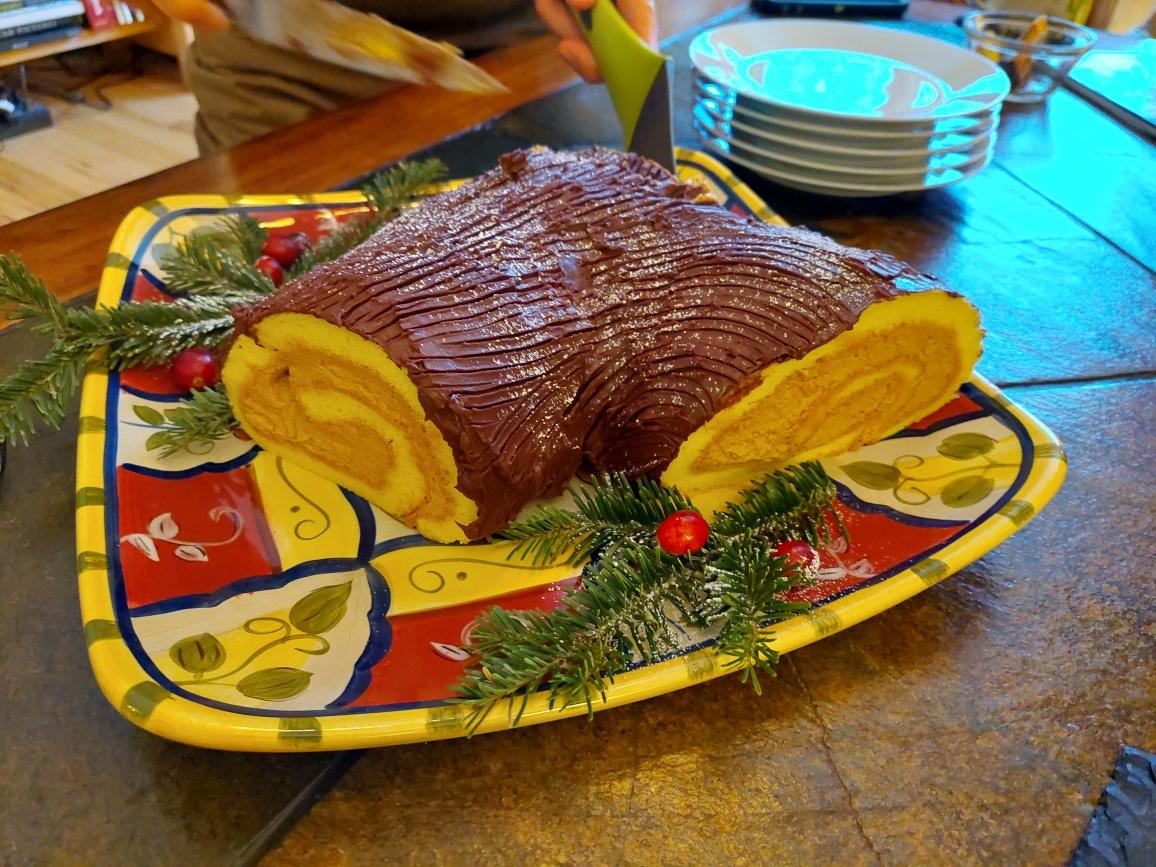
Midwinter's day is upon us - December 21st is the Winter Solstice! It is the shortest, darkest day in the Northern Hemisphere. It is the day that we turn the corner and start heading back into the light of spring and summer.
The winter season is full of holidays that bring light into the cold, dark days. It is fascinating to me how many cultures have traditions of winter celebrations that center on light, fire, candles, and stars. Our ancestors all over the world lived in close connection with nature and the changing of the seasons. They felt the cold and darkness more deeply than those of us with shelter, food, and electricity. Those sparks of light must have been inspiring, bringing the promise of warmer, brighter days to come.
This winter I am grateful for the comforts of home and connections with friends, family, and nature. It concerns me that in our modern, enlightened world there are still people who do not have those simple needs met. I find myself sending out a message of love in hopes that it will land where it is needed.
However you may be celebrating this year, whether lighting a candle on your own, or reveling with others, I wish you Peace and Love!
Finding Compassion Through Gratitude
11/22/2023
Gratitude is a powerful way to combat feelings of overwhelm, anxiety, and depression. It has been proven to help lower heart rate and blood pressure, reduce stress, and improve sleep. Even knowing all those benefits, the act of finding something to be grateful for can be challenging when things feel hopeless. Sometimes all it takes is a smile from a person at the grocery store or a hint of birdsong through the trees.
Gratitude is not a form of “toxic positivity.” It does not gloss over the horrible things happening around us. In fact, expressing gratitude can be a conscious effort not to be blinded by the trauma of all the imperfections and negative images surrounding us. It helps us to see beyond to the good that is still out there quietly carrying on.
Around the world, people are persecuted, treated unfairly, and judged for who they are, whether it is their race, culture, sex, sexual orientation, religion, or other differences. Understanding that there is past trauma and hurt behind so much of this behavior can help but does not excuse it. Focusing on these differences removes the humanity, the connections, and the feelings we all share.
I do not pretend to understand the complexities of political and historical injustices. It is painful to witness and of course so much more painful for those personally affected. It is important to acknowledge that grief and loss and not to brush over it.
Witnessing so much struggle is exhausting. This lack of compassion spreads to the earth and impacts the treatment of animals, plants, and the environment. People just don’t seem to have the strength to care. It feels like a global case of compassion fatigue that affects our home and our living conditions as it impacts all the other creatures on this warming planet.
What can we as individuals do? How can we cultivate compassion for the earth and for our fellow human beings?
Acknowledging our own feelings of trauma, past experiences, and grief is a place to start. If we hold these feelings in, they can fester and explode causing more trauma and destruction. Self-compassion for all that we have been through can reduce some of that strain. It may not be necessary or helpful to re-live these experiences, only to recognize that they occurred in the past. This can be a difficult process and therapy is highly recommended to help support and guide this self-exploration. We may not be able to change the world on our own, but we can work to improve our personal sense of peace through practicing self-compassion and bringing moments of gratitude into our everyday lives.
I certainly have my own pains and struggles. It is nothing like what is being experienced in large parts of the world. I can only be witness to this greater pain, to listen, to try my best to understand and see the many perspectives that complicate and yet also enrich our existence.
Gratitude is a way of seeing through all this conflict and negativity. Seeking out the beauty and compassion that still exists - the constants as we continue our daily journey around the sun. For me, connecting with nature brings me back to what is real. The basic building blocks of life are all around us. Yes, there is conflict, predation, and destruction in nature, but there is also creation, rebirth, and beauty. Humans can be excessively destructive. We also have the power for incredible innovation and creation. To see both sides and seek that counterbalance to the constant negative news cycles brings me hope and is a reminder of the possibilities for new growth.
Gratitude brings us back to the present moment, providing a break from concerns of the past or future. With gratitude comes compassion and connection, something this world could use more of. Sharing feelings of appreciation can go a long way to planting seeds of peace in our communities and greater circles.
As we move into the holiday season, I am grateful for the support of friends and family, the beauty and interconnectedness of the natural world that helps to keep me grounded, and the possibilities of expanding my knowledge and experiences in this wonderful life.
Wishing you gratitude in this season of introspection. May we all find more wisdom, compassion, and understanding.
Gratitude is not a form of “toxic positivity.” It does not gloss over the horrible things happening around us. In fact, expressing gratitude can be a conscious effort not to be blinded by the trauma of all the imperfections and negative images surrounding us. It helps us to see beyond to the good that is still out there quietly carrying on.
Around the world, people are persecuted, treated unfairly, and judged for who they are, whether it is their race, culture, sex, sexual orientation, religion, or other differences. Understanding that there is past trauma and hurt behind so much of this behavior can help but does not excuse it. Focusing on these differences removes the humanity, the connections, and the feelings we all share.
I do not pretend to understand the complexities of political and historical injustices. It is painful to witness and of course so much more painful for those personally affected. It is important to acknowledge that grief and loss and not to brush over it.
Witnessing so much struggle is exhausting. This lack of compassion spreads to the earth and impacts the treatment of animals, plants, and the environment. People just don’t seem to have the strength to care. It feels like a global case of compassion fatigue that affects our home and our living conditions as it impacts all the other creatures on this warming planet.
What can we as individuals do? How can we cultivate compassion for the earth and for our fellow human beings?
Acknowledging our own feelings of trauma, past experiences, and grief is a place to start. If we hold these feelings in, they can fester and explode causing more trauma and destruction. Self-compassion for all that we have been through can reduce some of that strain. It may not be necessary or helpful to re-live these experiences, only to recognize that they occurred in the past. This can be a difficult process and therapy is highly recommended to help support and guide this self-exploration. We may not be able to change the world on our own, but we can work to improve our personal sense of peace through practicing self-compassion and bringing moments of gratitude into our everyday lives.
I certainly have my own pains and struggles. It is nothing like what is being experienced in large parts of the world. I can only be witness to this greater pain, to listen, to try my best to understand and see the many perspectives that complicate and yet also enrich our existence.
Gratitude is a way of seeing through all this conflict and negativity. Seeking out the beauty and compassion that still exists - the constants as we continue our daily journey around the sun. For me, connecting with nature brings me back to what is real. The basic building blocks of life are all around us. Yes, there is conflict, predation, and destruction in nature, but there is also creation, rebirth, and beauty. Humans can be excessively destructive. We also have the power for incredible innovation and creation. To see both sides and seek that counterbalance to the constant negative news cycles brings me hope and is a reminder of the possibilities for new growth.
Gratitude brings us back to the present moment, providing a break from concerns of the past or future. With gratitude comes compassion and connection, something this world could use more of. Sharing feelings of appreciation can go a long way to planting seeds of peace in our communities and greater circles.
As we move into the holiday season, I am grateful for the support of friends and family, the beauty and interconnectedness of the natural world that helps to keep me grounded, and the possibilities of expanding my knowledge and experiences in this wonderful life.
Wishing you gratitude in this season of introspection. May we all find more wisdom, compassion, and understanding.
For the Love of Trees
10/13/2023

On a visit to the Peace Pagoda in Leverett Massachusetts, I found this tree dedicated by Jake Swamp (Tree of Peace Society) in 1985. Among many contributions to peace and conservation, Jake Swamp is the author of Thanksgiving Address: Greetings to the Natural World.
— — —
For the Love of Trees
The Autumn season draws our attention to the trees, particularly deciduous trees going through such beautiful color changes and losing their leaves. The changing winds bring out the music of the trees with the rustling of the leaves hanging onto their branches, falling to the ground, and dancing around at our feet.
We humans can build attachments to special trees in our lives, those that grow up with us and die in our lifetimes, and those that may live on for hundreds of years longer if given the chance.
There are many stories of grief over the loss of a single special tree. Recently in the UK, a beloved tree, the Sycamore Gap tree in Northumberland, was cut down by someone who certainly did not feel a connection to the trees. The public outrage that followed created a reminder that though we may build an attachment to one specific tree, billions of trees are estimated to be cut down every year with the primary cause being deforestation.
This destruction, of course, has a lasting impact on the global climate and the overall health of the earth and her inhabitants. Beyond the emotional and often spiritual connections humans feel for the trees, we share our breaths with the trees. They take in the carbon dioxide that we breathe out and produce oxygen that we breathe in. It is a natural exchange that has evolved together since life began on Earth.
Building connections with other life forms, nature, and the natural cycles brings out our humanity. It can create rich relationships on its own and remind us of connections with people in our lives.
This is your reminder to breathe with the trees!
Grief, Loss, and Trees
10/13/2023
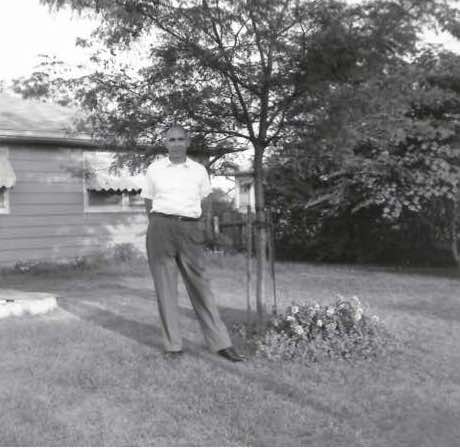
The following story is from a few years ago and continues to express the love, grief, and attachment we can feel with trees as strongly as with any other living beings. This story and the one above - For the Love of Trees - has been on my mind this season as we move into fall.
———
1/5/2020
Recently I stopped by a dear client’s home to deliver herbal medicine for her cat and happened to arrive in the middle of an incredibly sad event. Her beloved Moraine locust tree that had been planted by her father about 60 years ago was being removed. The beautiful shade tree had reached the end of its life and, due to internal decay, had become a potential hazard.
As a veterinarian who provides palliative care and home euthanasia services, there was a distinct familiarity with this moment. The machinery required was much bigger and more overwhelming than mine, but at the same time, I had stepped into a very somber moment of a treasured life passing. There were photos displayed of the tree as it had grown through the years and stood sentry by their home, witnessing her family’s entire history.
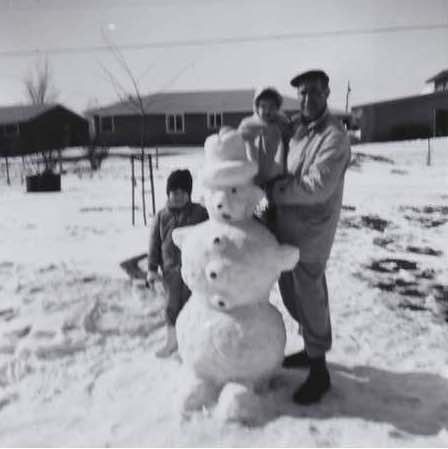
The photo above showing the sapling in the background with her father holding a young version of herself and her sister standing alongside was so incredibly touching. There were tears and hugs and she knew right away that I understood the added depth of her grief. The cat that I care for belonged to her deceased parents and she is now the guardian of their cat and their home. Two years earlier, she had been there for me with words and tears for my grief as my father was dying. It was clear that this moment, cutting down and taking away this tree, was about so much more. Later she told me that it had felt like losing her Mom and Dad all over again.
Events like this can bring up so many emotions, and often we don’t recognize all of the connections. I was glad to have been there to share in this moment and catch her stories of the loss of such a special living being. What a beautiful way to celebrate the many intertwined lives with photos and the intentional honoring of memories.
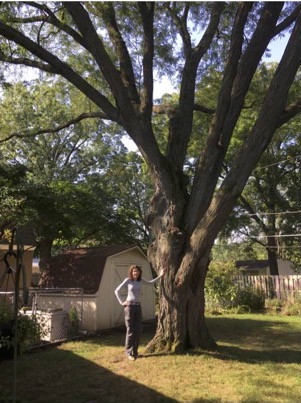
Harvest Time!
09/06/2023
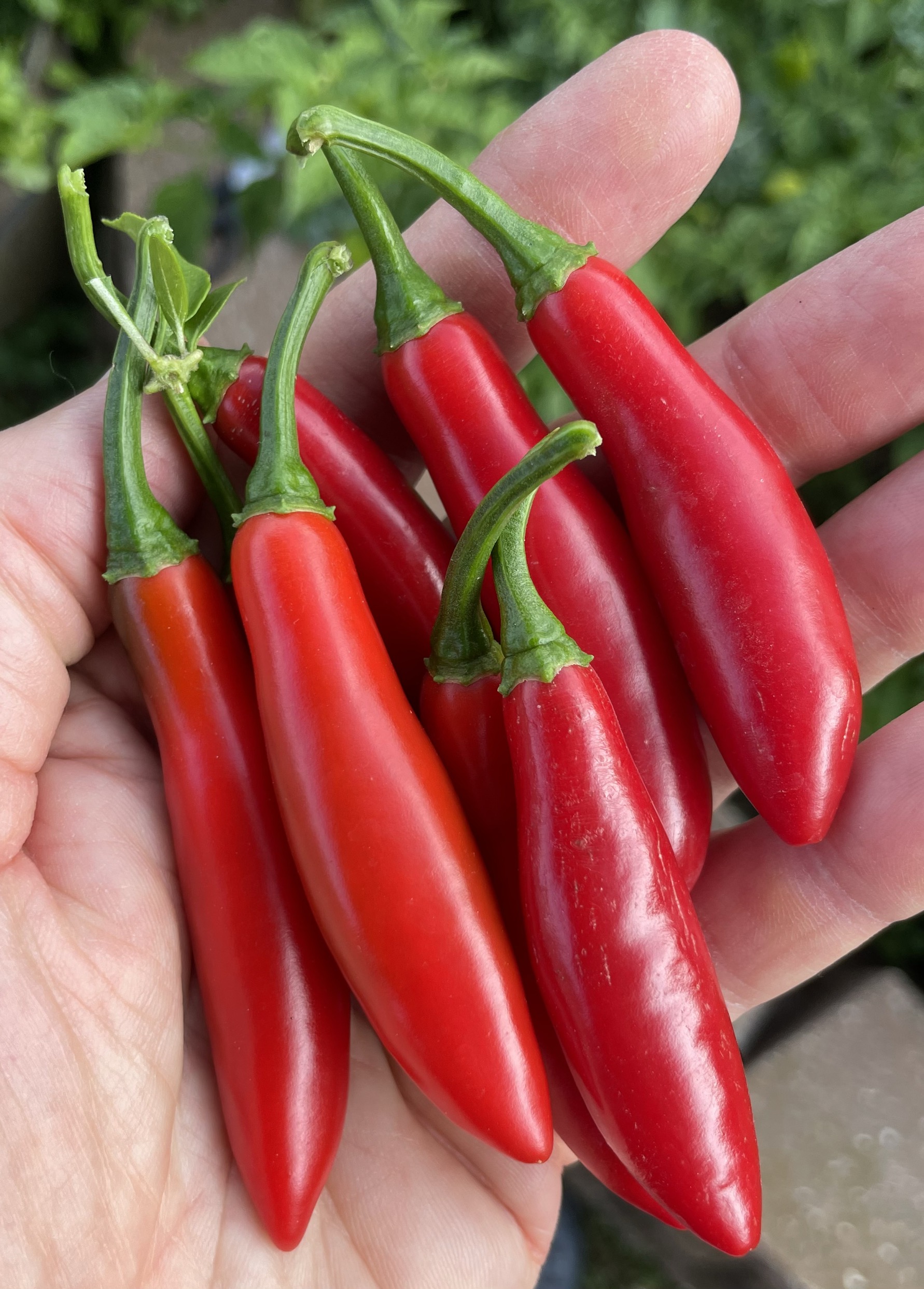
Autumn is on its way! Animals and people are busy harvesting the fruits of summer's labors. We had a bounty of peaches and peppers are doing well too!
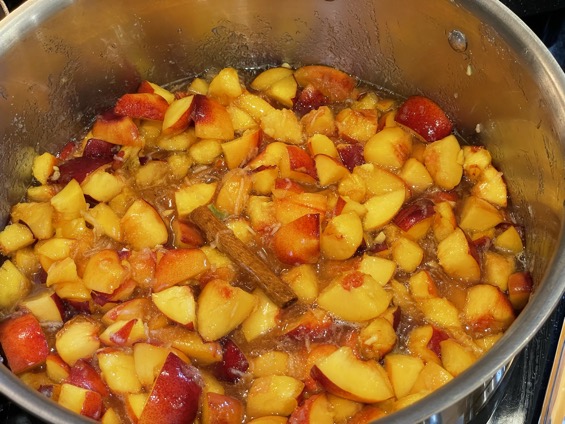
Here in Iowa we are feeling some cooler temperatures as the wind has shifted to stronger breezes from the northwest. Leaves are showing the first signs of yellowing and many plants have finished flowering and now have seeds drying in preparation for withstanding the winter cold.
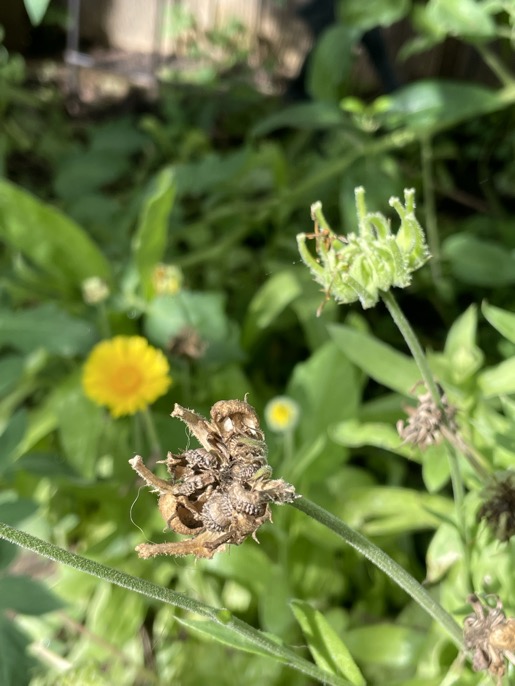
Calendula officinalis
Fall is a time for stocking up and building strength in preparation for winter. It is also a time for coming together in celebration of the harvest and sharing stories around an outdoor fire. As we enjoy this cooler weather, a respite between summer and winter, it is the perfect time to offer support to ourselves and to each other.
What do you need to stock up on for winter? Physically, Mentally, and Metaphorically?
Gift Packages Coming Together!
08/20/2023
Preparations for the 2023 Self-Care course session are in full swing!
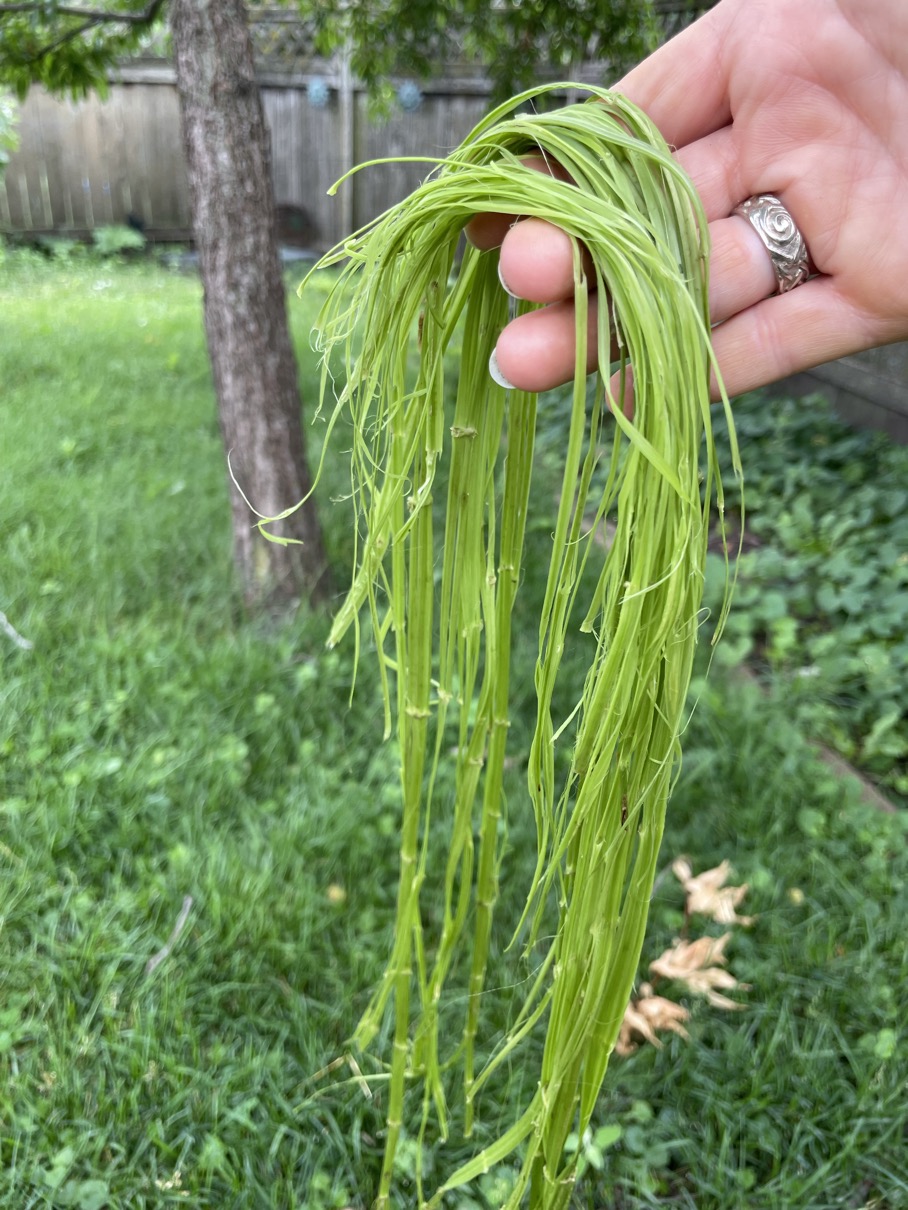
Here is a glimpse of the gift package assembly process. Mailed at the beginning of the course in September, these monthly gifts are intended to add a physical and sensory component enhancing mindfulness and connection to the natural world.
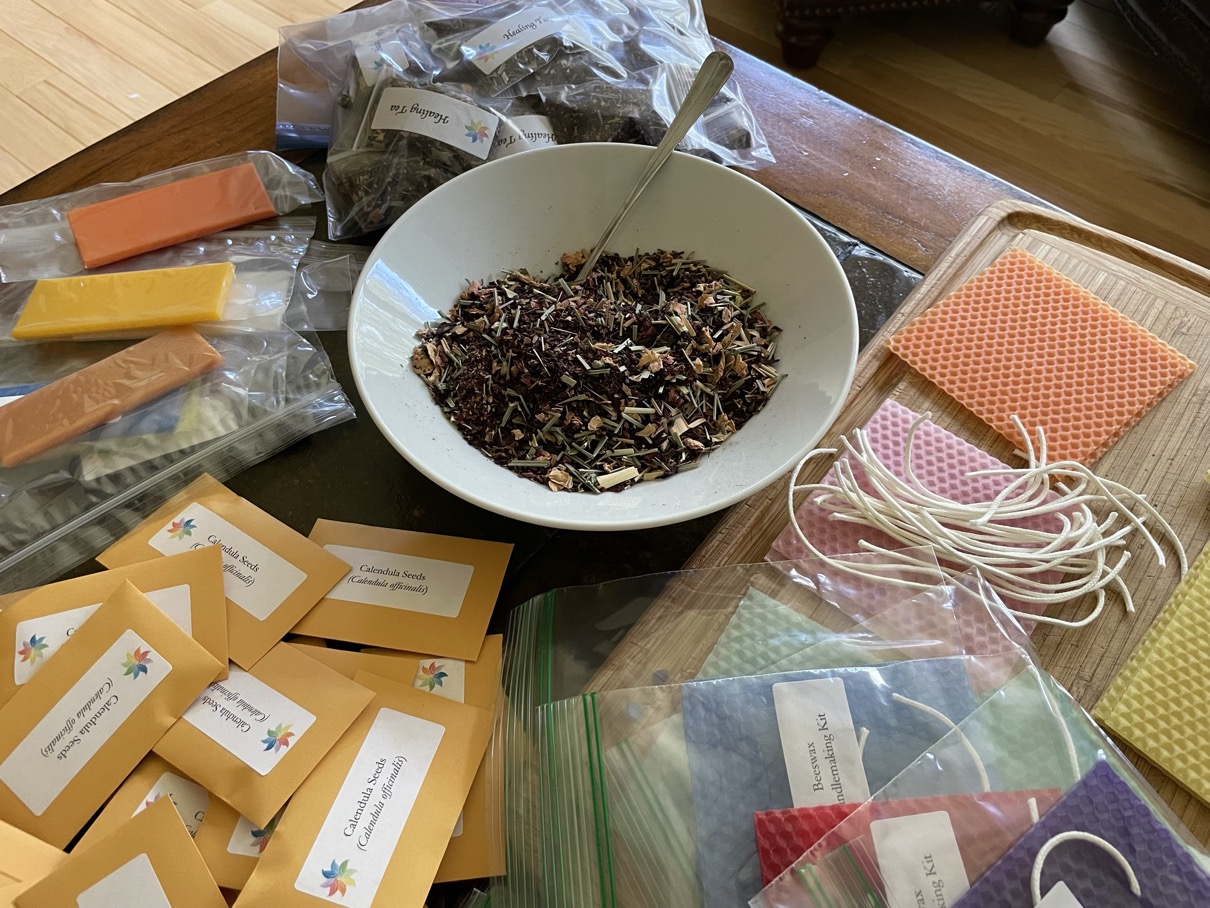
The gifts are chosen with care to bring out the scents, tastes, activities, and moods that express each season as we move around the wheel. Some are more energizing, some creative, some inspiring, and some relaxing. They all give ideas to enhance your exploration of nature and self!
There is still time to join us in the Self-Care Through the Cycles of Nature class!

Here is a glimpse of the gift package assembly process. Mailed at the beginning of the course in September, these monthly gifts are intended to add a physical and sensory component enhancing mindfulness and connection to the natural world.

The gifts are chosen with care to bring out the scents, tastes, activities, and moods that express each season as we move around the wheel. Some are more energizing, some creative, some inspiring, and some relaxing. They all give ideas to enhance your exploration of nature and self!
There is still time to join us in the Self-Care Through the Cycles of Nature class!
